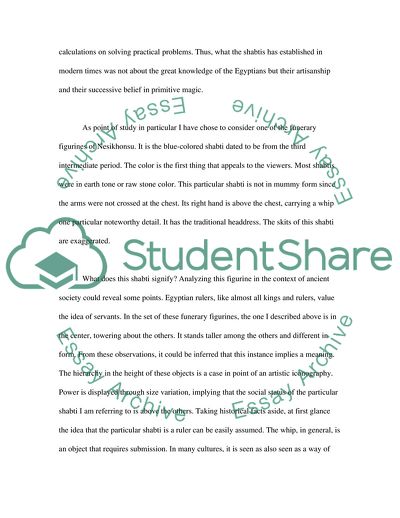Cite this document
(Shabtis and Egyptian Iconography Essay Example | Topics and Well Written Essays - 1250 words, n.d.)
Shabtis and Egyptian Iconography Essay Example | Topics and Well Written Essays - 1250 words. https://studentshare.org/visual-arts-film-studies/1713231-iconography-about-egyptian-shabtis-and-statue-of-gudea-in-the-metropolitan-collection-and-its-comparsion-to-each-other
Shabtis and Egyptian Iconography Essay Example | Topics and Well Written Essays - 1250 words. https://studentshare.org/visual-arts-film-studies/1713231-iconography-about-egyptian-shabtis-and-statue-of-gudea-in-the-metropolitan-collection-and-its-comparsion-to-each-other
(Shabtis and Egyptian Iconography Essay Example | Topics and Well Written Essays - 1250 Words)
Shabtis and Egyptian Iconography Essay Example | Topics and Well Written Essays - 1250 Words. https://studentshare.org/visual-arts-film-studies/1713231-iconography-about-egyptian-shabtis-and-statue-of-gudea-in-the-metropolitan-collection-and-its-comparsion-to-each-other.
Shabtis and Egyptian Iconography Essay Example | Topics and Well Written Essays - 1250 Words. https://studentshare.org/visual-arts-film-studies/1713231-iconography-about-egyptian-shabtis-and-statue-of-gudea-in-the-metropolitan-collection-and-its-comparsion-to-each-other.
“Shabtis and Egyptian Iconography Essay Example | Topics and Well Written Essays - 1250 Words”. https://studentshare.org/visual-arts-film-studies/1713231-iconography-about-egyptian-shabtis-and-statue-of-gudea-in-the-metropolitan-collection-and-its-comparsion-to-each-other.


